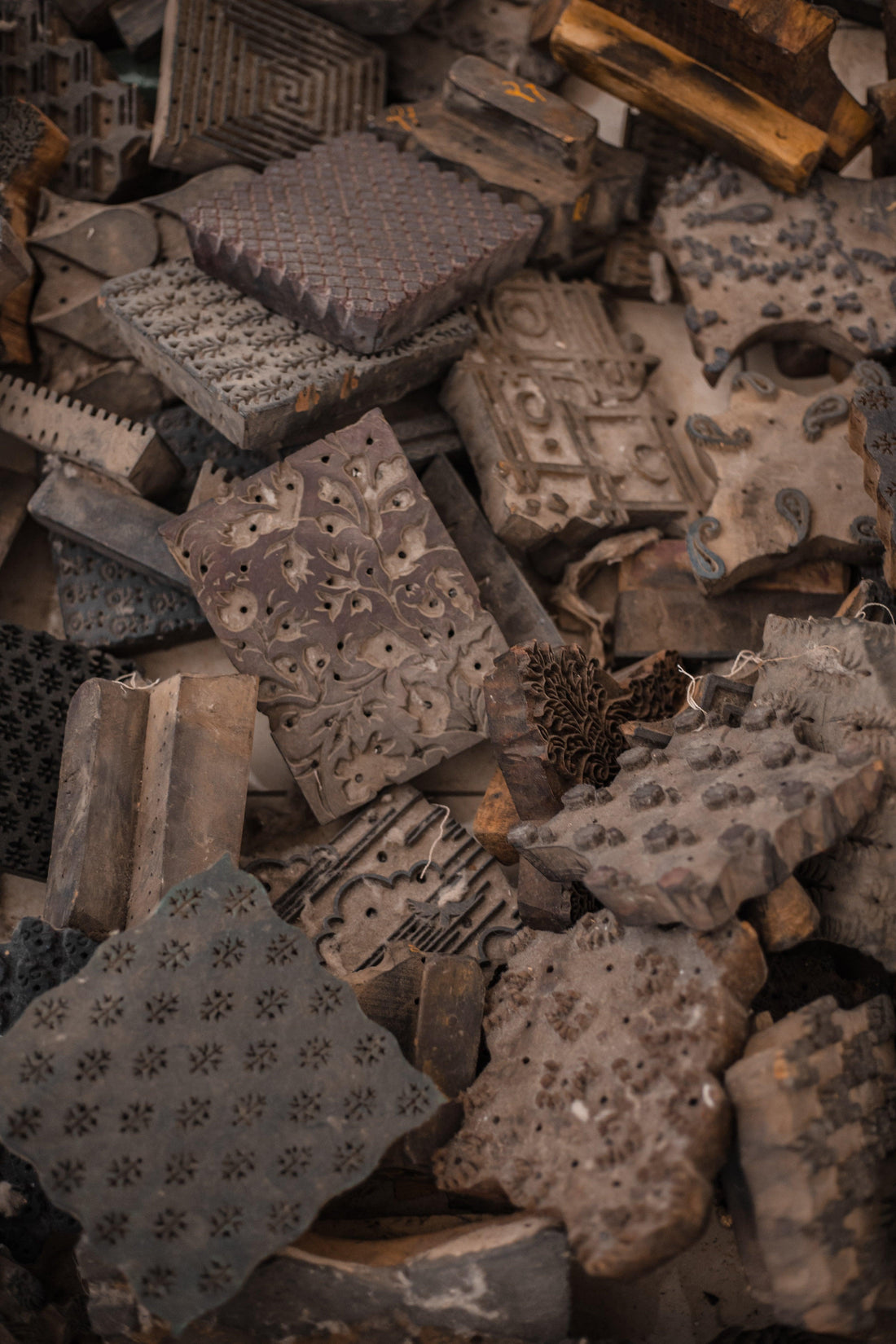
Crafted with Care - The Art of Block Printing
Share
India's rich cultural heritage is woven intricately with its diverse textile traditions, and among them, block printing stands as a testament to centuries-old craftsmanship. This ancient technique, dating back to the 12th century, continues to captivate with its intricate designs and meticulous process.

History of Block Printing
Block printing in India has its roots in the Indus Valley Civilization, where fragments of cotton with block-printed patterns have been found. However, its golden age began during the Mughal era, when it flourished as a royal art form patronized by emperors. The technique involves using wooden or metal blocks to stamp designs onto fabric, with each region of India developing its unique styles and motifs over time.
Techniques
- Styles and Regions: India boasts several prominent styles of block printing, such as Ajrakh from Gujarat, Bagru from Rajasthan, Kalamkari from Andhra Pradesh, and Sanganer from Jaipur, each distinguished by its motifs, colors, and methods.
- Process: The process typically involves several stages, including designing the pattern, carving the block on wood, preparing natural dyes or chemical pigments, and meticulously printing onto fabric with precision. The more intricate the design is the more time consuming and precision involved. Each step requires skill and patience, making it a labor-intensive craft.
Some Challenges
Despite its cultural significance and artistic value, block printing faces several challenges in the modern era:
- Market Competition: Mass-produced synthetic textiles , Industrial Screen prints often undercut handmade block-printed fabrics in terms of cost, posing a threat to traditional artisans.
- Environmental Concerns: The use of synthetic dyes in some areas has raised environmental concerns, prompting a shift towards eco-friendly practices and opting for natural dyes that are even more labour and time intensive
- Skill Preservation: The transmission of skills from older generations to younger artisans is crucial but faces challenges due to changing economic realities and aspirations and absence of fair wages.
- Time intrinsic : Unlike screen printing at industrial setups , hand block printing is a time taking art form with tedious process that involve patience and time.
Over the last decades, several milestones have shaped the landscape of block printing in India:
Revival Efforts: Qrganization's and designers have championed the revival of traditional block printing techniques, creating awareness about its cultural importance and supporting artisan communities incorporating Block prints in their designs.
Innovation in Design: Contemporary designers have infused new life into block printing by adapting traditional motifs to modern fashion trends, thus expanding its appeal both locally and globally.
Recognition and Awards: Individual artisans and organizations promoting block printing have received recognition through national and international awards, highlighting the art form's significance.
Individual Contributions
Notable individuals have made significant contributions to the preservation and promotion of block printing:
- Anokhi: Founded in Jaipur in 1970, Anokhi played a pivotal role in reviving and popularising block printing, showcasing the craftsmanship of artisans across Rajasthan.
- Ritu Kumar: Renowned fashion designer Ritu Kumar has integrated traditional block printing techniques into contemporary fashion, thereby ensuring its relevance in modern times.
- Artisan Communities: Across India, countless skilled artisans continue to uphold the legacy of block printing, their expertise passed down through generations, contributing to the art form's continuity.
Block printing in India is more than just a textile art form, it embodies centuries of tradition, craftsmanship, and cultural identity. Despite facing challenges, its resilience and timeless appeal continue to inspire artisans and designers worldwide all the more today. As we celebrate its history, techniques, challenges, and contributions over the last few decades, let us recognise the enduring beauty and significance of block printing in the tapestry of Indian textiles.
